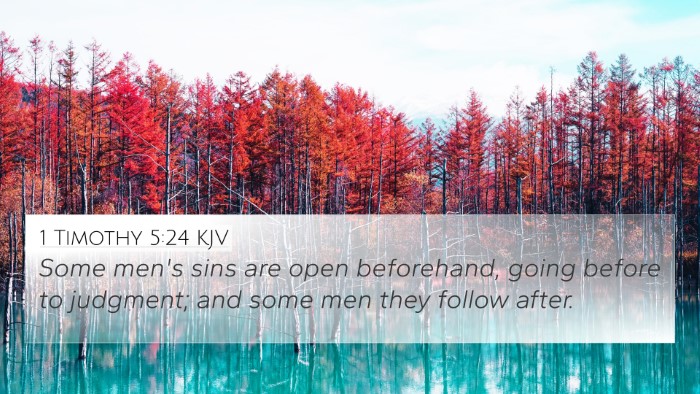Understanding Leviticus 13:4
Leviticus 13:4 states:
"But if the leprosy be white in the skin of his flesh, and it be not deeper than the skin, and the hair thereof be turned white; then the priest shall pronounce him clean: it is but a scab, and he shall wash his clothes, and be clean."
Summary of the Meaning
This verse provides instructions regarding the assessment of leprosy, a condition that held significant implications within the Levitical law. The priest plays a critical role in evaluating the severity of the skin condition, determining if it is truly leprosy or if it can be classified as a milder condition.
Key Interpretations from Public Domain Commentaries
-
Matthew Henry:
Henry emphasizes the importance of the priest's role in the community, serving as a mediator between the afflicted individual and God. The evaluation process is vital to distinguish between true leprosy and a minor skin issue, showcasing God's consideration for humanity's well-being.
-
Albert Barnes:
Barnes notes that the criteria for determining the uncleanness of the skin condition served a dual purpose: it not only protected the community from disease but also offered hope to the afflicted—a chance for restoration and cleanliness following divine standards.
-
Adam Clarke:
Clarke elaborates on the physical signs required to declare a person clean, underscoring the meticulous nature of the law and how it reflects God's holiness. The distinction drawn here signifies deeper spiritual truths about purity and grace.
Thematic Bible Verse Connections
Leviticus 13:4 opens a dialogue between the Old Testament laws and the principles of spiritual cleanliness in New Testament teachings. Below are several cross-references that expand on similar themes:
- Numbers 5:2-3: Discusses the isolation of unclean individuals to prevent contamination.
- Matthew 8:2-3: Jesus' healing of a leper signifies the fulfillment of the law and compassion beyond mere ritual.
- Mark 1:40-42: Another account of Jesus cleansing a leper, demonstrating His authority over the law.
- Lamentations 3:22-23: Insights on God's mercy and the renewing of one’s spirit, reflecting the theme of cleansing.
- Revelation 21:27: Speaks of the purity required for entrance into the heavenly city, paralleling Levitical laws of cleanliness.
- Isaiah 53:5: Foretells the scars of Christ, connecting suffering to spiritual cleansing.
- Hebrews 9:22: Relates to the necessity of blood for purification, echoing the sacrificial system established in Leviticus.
Significance in Cross-Referencing Bible Texts
The process outlined in Leviticus provides a framework for understanding the need for examination and reflection on spiritual purity. As we study scripture, cross-referencing relevant passages reveals a cohesive narrative that spans both Testaments. This thematic connection is vital for comprehending the full spectrum of God's plan for humanity.
Tools for Bible Cross-Referencing
Utilizing a Bible concordance or a Bible cross-reference guide can enhance your study. These tools allow users to find related verses and uncover deeper meanings. Here are some methods to effectively use cross-references:
- Look for keywords and themes in a Bible cross-reference system.
- Engage in cross-reference Bible study to explore the links between passages.
- Consider comprehensive Bible cross-reference materials that provide context and connections.
Addressing User Intent Queries
For those asking “What verses are related to Leviticus 13:4?”, the following inquiries can help:
- What are the connections between Leviticus and the New Testament regarding cleansing?
- How do the laws of uncleanliness in Leviticus compare with Jesus' healing miracles?
Conclusion
Leviticus 13:4 serves as an important scripture that underscores God’s meticulous attention to purity laws while also reflecting His grace in offering restoration. As believers examine this verse and its connections to broader themes within the Bible, they gain deeper insight into God’s character and the significance of spiritual cleanliness.







